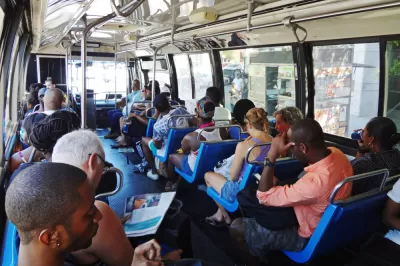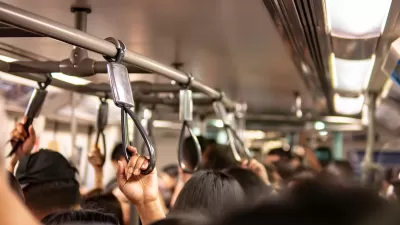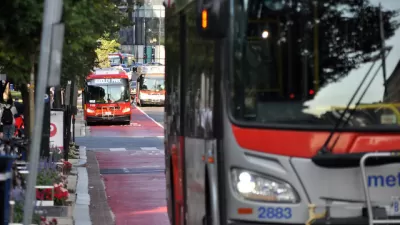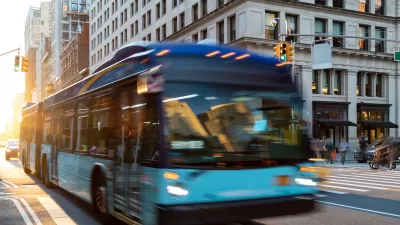Fare capping—putting a ceiling on the amount a transit passenger pays in a day or a month regardless of the number of trips—is becoming a popular policy option for transit agencies seeking to increase equity and bring back riders.

As transit agencies struggle to boost their ridership and adjust to the new realities of transportation in the wake of the COVID-19 pandemic, some advocates are promoting fare capping as one way to support low-income riders and make transit more affordable for frequent travelers.
As Skip Descant explains in Governing, “once a rider pays the equivalency of a monthly pass — whether that takes a week or two — the remaining rides that month are free. Or, once multiple transfers on a given trip reach a certain amount, the rest of the day’s trips are free.”
According to Descant, “Fare capping is seen as not only a key piece of transportation equity but also a way to grow loyalty among riders. And the payment technology — contactless payments, mobile ticketing and other advancements — is making fare capping an easier policy lift for transit organizations.” Christian Henry, senior vice president and general manager, North America eastern region at Cubic Transportation Systems, points out that “In transportation, the convenience of open payments on phones and wearables is helping New York, but the unbanked or those without devices still need the ability to use cash with dignity and have access to the benefits of fare capping through agency-issued fare media.”
The article describes a contactless fare pilot program called the California Integrated Travel Project (Cal-ITP), which “offers technical support to all California transit agencies interested in deploying a contactless fare payment system that includes fare capping.” To date, “As part of Cal-ITP, tap-to-pay systems — which are also fare-capping systems — have been deployed on the Monterey-Salinas Transit system, Santa Barbara Metropolitan Transit District and Sacramento Regional Transit District (SacRT) light rail.”
FULL STORY: One Way to Make Transit More Equitable: Fare Capping

Planetizen Federal Action Tracker
A weekly monitor of how Trump’s orders and actions are impacting planners and planning in America.

Canada vs. Kamala: Whose Liberal Housing Platform Comes Out on Top?
As Canada votes for a new Prime Minister, what can America learn from the leading liberal candidate of its neighbor to the north?

The Five Most-Changed American Cities
A ranking of population change, home values, and jobs highlights the nation’s most dynamic and most stagnant regions.

San Diego Adopts First Mobility Master Plan
The plan provides a comprehensive framework for making San Diego’s transportation network more multimodal, accessible, and sustainable.

Housing, Supportive Service Providers Brace for Federal Cuts
Organizations that provide housing assistance are tightening their purse strings and making plans for maintaining operations if federal funding dries up.

Op-Ed: Why an Effective Passenger Rail Network Needs Government Involvement
An outdated rail network that privileges freight won’t be fixed by privatizing Amtrak.
Urban Design for Planners 1: Software Tools
This six-course series explores essential urban design concepts using open source software and equips planners with the tools they need to participate fully in the urban design process.
Planning for Universal Design
Learn the tools for implementing Universal Design in planning regulations.
New York City School Construction Authority
Village of Glen Ellyn
Central Transportation Planning Staff/Boston Region MPO
Institute for Housing and Urban Development Studies (IHS)
City of Grandview
Harvard GSD Executive Education
Regional Transportation Commission of Southern Nevada
Toledo-Lucas County Plan Commissions





























